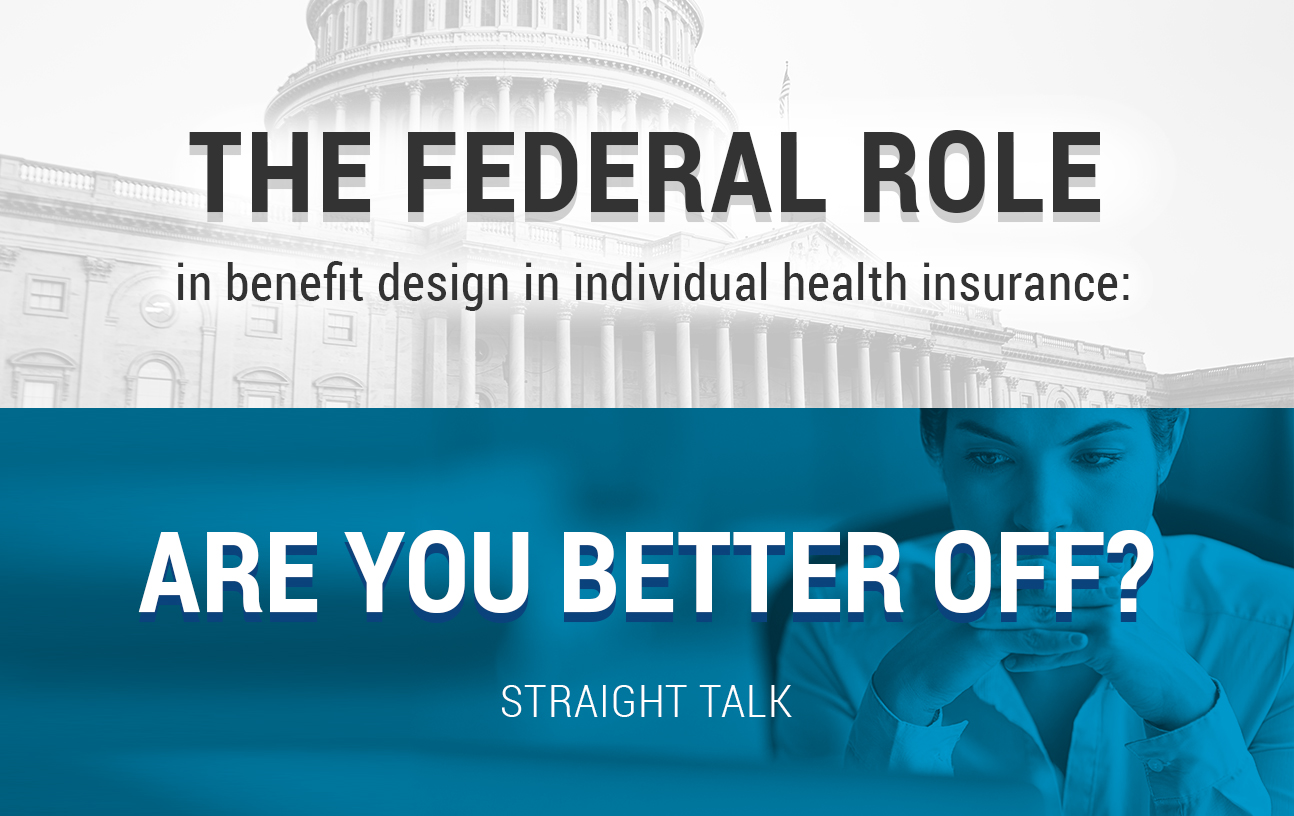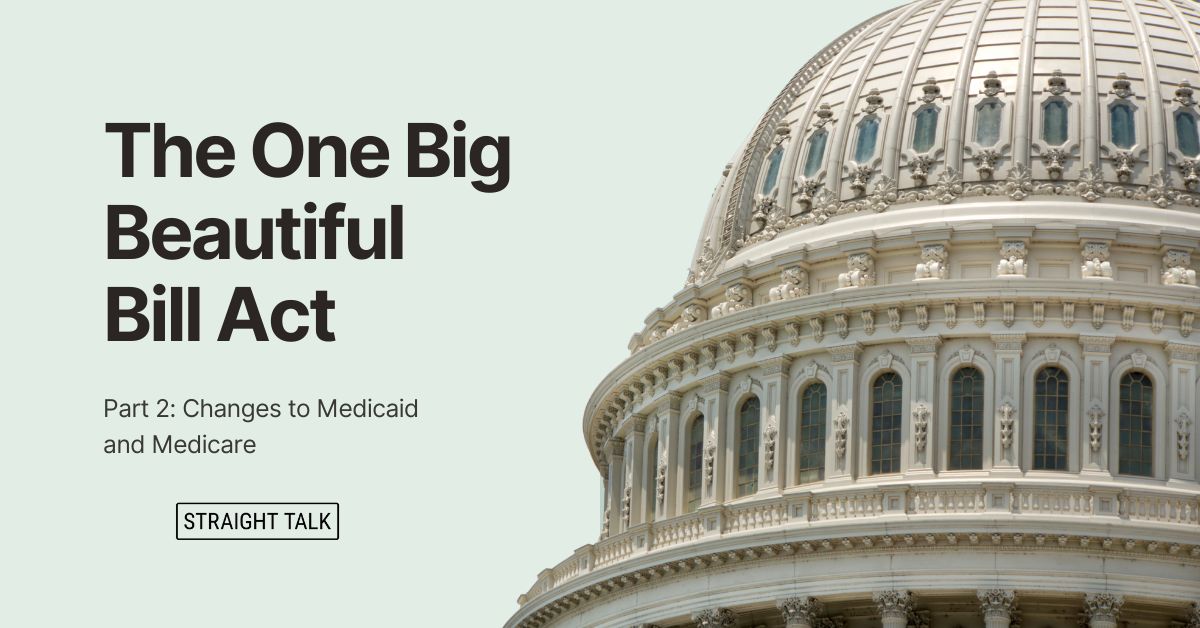Note from Mike: I’m sifting through the information coming out about the Affordable Care Act, Medicaid, Medicare and healthcare in a Trump presidency. I’ll be back soon to offer my take on it, but in the meantime, see this Q&A on what Blue Cross is doing right now.
In my last blog post, I gave details about how much rates for individual customers’ health insurance are going up next year and why. I promised do a future blog about not just how much premiums cost, but how much financial protection the federally-designed products for 2017 give the average customer. This may get a bit wonky, so please bear with me as you go through.

Why Are Out-of-Pocket Costs Rising?
My social media friend here is more right than he knows. If you pay attention to the 2017 products on healthcare.gov, you’ll notice it’s not just premiums that are skyrocketing. Take a look at deductibles, co-pays and the max out-of-pocket costs you pay on your plan.
The two plans below have identical network coverage (broad!) and deductibles, but one is from the year the healthcare reform law was signed (2010) and resulted from a partnership between Blue Cross and the Louisiana Department of Insurance. The second plan reflects our reality since 2014 and the federal takeover of the individual health insurance marketplace.
|
Case #1
|
||||
| Cost/Risk | 2010 Health Plan | 2017 Health Plan (Gold) | Difference | % Terms |
| Premiums | $4,417.20 | $9,479.76 | +$5,062.56 | +115% |
| Deductible | $1,000.00 | $1,000.00 | +$0.00 | 0% |
| Max Out-of-Pocket | $2,000 | $4,800 | +$2,800 | +140% |
| Member Cost to Cover $100k Hospital Bill (in network, Including Premiums) | $6417.20 | $14,279.76 | +$7,862.56 | +122% |
Premium for 49-year-old non-smoker, standard risk in 2010, all included in 2017
Why is the 2017 plan so much more expensive? For all the reasons we listed in our previous blog post, people who couldn’t get insurance before or had to pay extra because of their health problems now are in the risk pool and pay the same as everyone else. And, tons of new coverage has been added to these plans (and not the sort of things the average person often uses, like maternity care for a 27-year-old male).
More Benefits = More Costs
Our 2010 plans covered several important tests and screenings at $0 to the insured. The 2017 plan covers 46 different services at zero deductible and includes free birth control and sterilizations (for women only, oddly enough) as required in federal law. And of course, the 2017 plan takes everyone, no medical questions asked, at the same rates.
There is another layer to the differences as well. The feds have “de-selected” this much coverage. In other words, all the credits, subsidies and assistance someone gets to buy coverage are based on coverage a lot more basic than this. The Feds decided at some point that the plan above was “too much coverage” for the average individual and decided that you should carry more risk when you buy insurance, and therefore have fewer choices. That’s what federal intervention looks like.
Above, I assumed you wanted the same broad hospital and doctor network coverage in 2017 you had in 2010, with a similar deductible. As you can see, you’ll pay 115% more in premiums and roughly 122% more in case of a significant illness with a hospital stay. Even after seven years, an extra $7,800 in out-of-pocket costs can be financially crippling. The gaps here reflect federal benefit design. They want to discourage you from buying the same amount of access and protection.
In our new, federally designed benefit reality, most people have had to sacrifice this broad-based network coverage for new provider networks with fewer doctors and hospitals to lower their premiums. By making a few adjustments, you can lower your costs a bit like this:
|
Case #2
|
||||
| Cost/Risk | 2010 Health Plan | 2017 Health Plan (narrow) | Difference | Notes |
| Premiums | $4,417.20 | $6,988.08 | +$2,570.88 | +58% |
| Deductible | $1,000 | $3,000 | +$2,000 | +200% |
| Max Out-of-Pocket | $2,000 | $5,100 | +$3,100 | +155% |
| Member Cost to Cover $100k Hospital Bill (in network, Including Premiums) | $6417.20 | $12,088.08 | +$5,670.88 | +88.4% |
Premium for 49-year-old non-smoker, standard risk in 2010, all included in 2017
Our New Reality
In this graph, we can see the thumbprint of federal control over plan value taking shape. The 2017 version of individual health insurance in case #2 is a bit more expensive, but at a 58% increase over seven years, not incredibly so. But, the “risk exposure” of the person buying the insurance has still climbed more than 88%! That leaves the member paying $2,500 more in premiums and bearing an extra $3,100 in costs if he has a serious illness. $5,600 extra out of pocket is a significant amount of money.
And this was after giving up access to perhaps half of all the healthcare providers in the plan area versus the 2010 plan.
Why did this happen? On top of all the rate increases, why more out-of-pocket costs, and fewer doctors and hospitals, too?
Metal Level Differences
In addition to these policies having to cover everyone who shows up at the same pricing, and the other issues we mentioned in our previous blog, the value of health insurance sold on healthcare.gov has to conform to a federally controlled “Actuarial Value Calculator.” This calculator tells Blue Cross which designs are legal to sell. It then tells us where the plan falls on the metal level scale. We only know which plans are Bronze, Silver, Gold or Platinum because the federal calculator tells us so.
The really odd thing is, some federal economist decided back in 2010 that the appropriate amount of coverage YOU should have is a low-end Silver plan. And they encourage that decision by maximizing all the federal assistance you get when you buy insurance at the second-cheapest Silver plan in a market. They even have a special name for that plan –the “Benchmark” plan. But in case #3, look at the difference between what you could buy in 2010, versus the second-cheapest Silver plan in Baton Rouge for 2017.
|
Case #3
|
||||
| Cost/Risk | 2010 Health Plan | 2nd-Cheapest Silver Plan | Difference | Notes |
| Premiums | $4,417.20 | $5,005.56 | +$588.36 | +13% |
| Deductible | $1,000 | $3,000 | +$2,000 | +200% |
| Max Out-of-Pocket | $2,000 | $5,100 | +$3,100 | +155% |
| Member Cost to Cover $100k Hospital Bill (in network, Including Premiums) | $6417.20 | $10,105.56 | +$3,688.36 | +57.5% |
Premium for 49-year-old non-smoker, standard risk in 2010, all included in 2017
Comparing the two above is a bit like buying a Mercedes in 2010 and settling for a Chevy in 2017.
You can see the difference from the most popular plan sold in 2010, and the federally selected and specified second-cheapest Silver plan for 2017. What you can’t see is that in addition to the increased financial exposure the “new” plan requires, it also only covers about 40% of the doctors and hospitals that the 2010 plan covered.
So let’s review.
Since the Feds have taken over plan design, tax credits and subsidies, they clearly believe that you will put up with fewer choices of doctors and hospitals and pay lots more in deductibles and out-of-pocket costs, just to keep your premiums down. You pay roughly the same amount, but you get a lot less for your money, then they get to crow about how many people are “covered.” And since that’s their bragging point (read every article about the ACA; they all start with the “millions more with coverage …”), they are not that interested in exposure or whether you can actually use your coverage.
And that’s where we are now. Sorry for the wonkiness, but I promised, and this is Straight Talk on health insurance plan design and your exposure when you buy it.





Leave a Reply